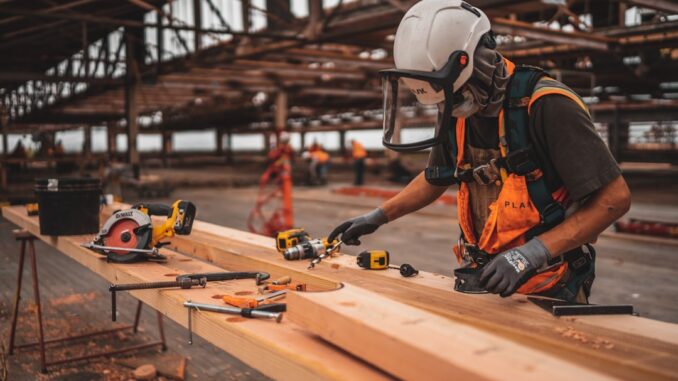
Summary
Construction leaders met with the Business Secretary to discuss the government’s latest building initiatives, focusing on the changes to UK Building Regulations implemented in October 2023. These changes aim to improve building safety, energy efficiency, and accessibility while also addressing the increasing need for electric vehicle charging infrastructure. The meeting sought to align industry practices with the evolving regulatory landscape and ensure a smooth transition to the new standards.
Focus360 Energy: property compliance services – pre-planning to post-construction. Learn more.
Main Story
Had an interesting discussion the other day – building industry leaders met with the UK’s Business Secretary to talk about the government’s ongoing building initiatives. The big focus? The changes to Building Regulations that went live on October 1st, 2023. These changes, as you probably know, are pretty significant.
Essentially, the meeting was all about having an open conversation. How do these updated regulations actually work in practice? And how can the government and the industry team up to make sure they’re implemented smoothly? We’re talking about things like the definition of ‘higher-risk’ buildings being broader now, tougher rules for fire safety and ventilation, and even making sure we’re ready for electric vehicles.
One of the biggest talking points was definitely this new definition of ‘higher-risk’ buildings. It’s not just about height anymore, you see. Before, it was mostly buildings over 18 meters. Now, it’s anything seven stories or more, with two or more homes (not counting rooftop spots, mind you). And look, this isn’t just bureaucracy; it’s about learning from past mistakes. Grenfell Tower, for example, that tragedy really highlighted the need for more oversight on a wider range of buildings. Some construction leaders were worried about applying these rules to older buildings. They, rightfully, asked about support to help with this transition.
Then there’s fire safety. After all those tragedies, it’s the most important thing, right? The new Building Regulations have ramped up the fire safety requirements for everything – new builds and renovations alike. The updated Approved Document B has stricter standards for materials, how buildings are divided up, and escape routes. Industry folks asked the Business Secretary for training and resources to help understand these requirements. It’s not just about being safe; it’s also about being practical and cost-effective, wouldn’t you agree?
But it’s not only about fire. Ventilation and EV charging also got a lot of attention. Approved Document F now demands higher ventilation standards in new buildings. Why? To make the air inside cleaner and reduce the spread of diseases. Makes sense, doesn’t it? We’re all about health and well-being these days. Plus, the regulations now require EV charging stations in new buildings. Now, there’s a commitment to sustainability! Questions arose about the tech needed for these charging points, and even how it would affect the grid.
We also glanced over the existing Building Regulations, including energy efficiency and accessibility. It’s a progression toward the Future Homes and Buildings Standard, cutting carbon emissions and boosting energy performance. A pretty big goal, I think, and requires steps like using modern building tech and improving insulation. And let’s not forget accessibility. The regulations clearly outline needs for entrances, exits, and internal layouts.
Plus, the meeting touched on issues facing the construction industry more broadly. The skills gap, rising costs, and the call for innovation. The Business Secretary said the government will back the industry, including training and funding programs and streamlined planning.
All in all, it was a good discussion. By talking openly and working together, the government and the construction industry can make sure these new regulations actually work. Hopefully, these regulations will lead to buildings that are safer, healthier, and more sustainable. The insights gained should affect decisions later down the line, and help shape the construction sector. I believe this constant dialogue is key as the UK aims to meet its climate goals and build an environment that’s both safe and sustainable, don’t you?


So, seven stories is now officially “higher risk”? Does this mean my dreams of a luxurious six-story penthouse with a really, *really* tall flagpole are still achievable? Asking for a friend… who might be me.
Haha, love the flagpole ambition! While six stories might escape the “higher risk” definition, remember the regulations also consider the number of dwellings. So, plan those rooftop terraces carefully for your friend… or you! Let’s ensure safety and aspiration go hand in hand.
Editor: FocusNews.Uk
Thank you to our Sponsor Focus 360 Energy
So, “streamlined planning”… does that involve less red tape, or just faster ways to tie us up with it? Because “backing the industry” sounds suspiciously like more hoops to jump through.
That’s a great question! The idea behind “streamlined planning” is definitely to reduce unnecessary delays and bureaucracy, but the devil’s always in the details. We’re hoping it translates to a more efficient process overall, rather than just faster paperwork! Let’s see how it unfolds in practice and keep the conversation going.
Editor: FocusNews.Uk
Thank you to our Sponsor Focus 360 Energy